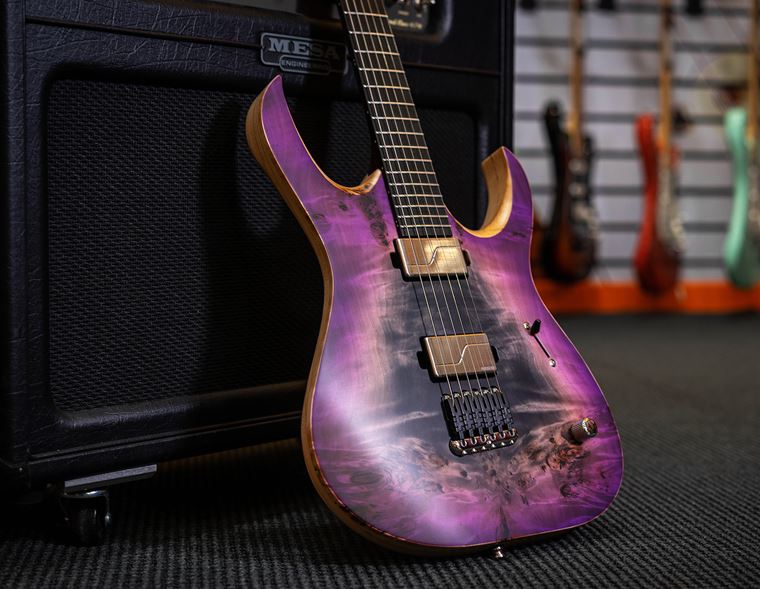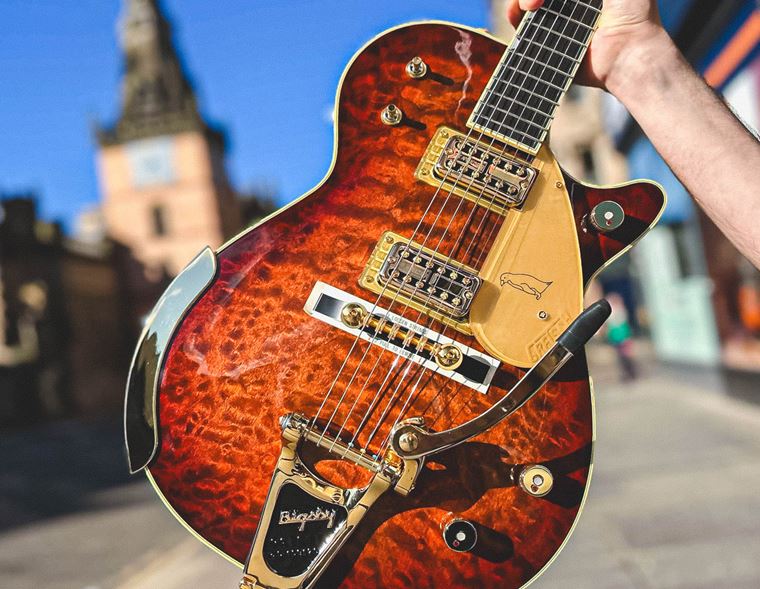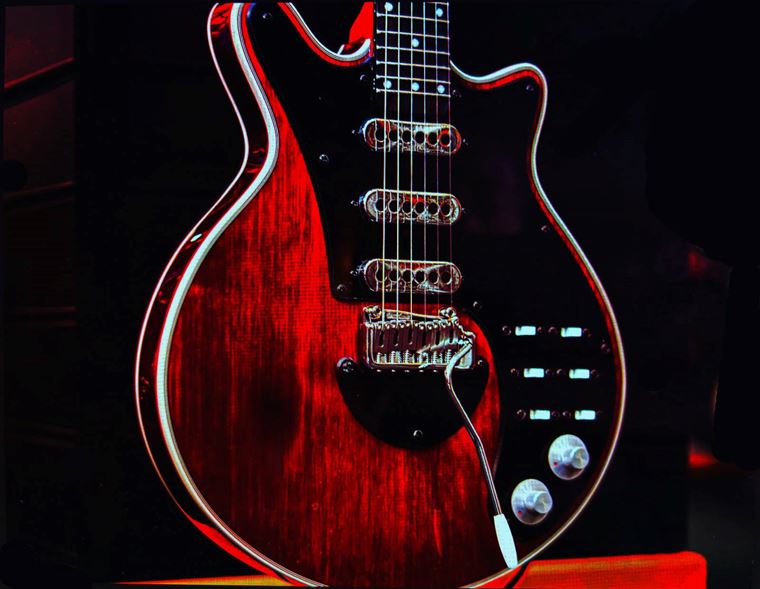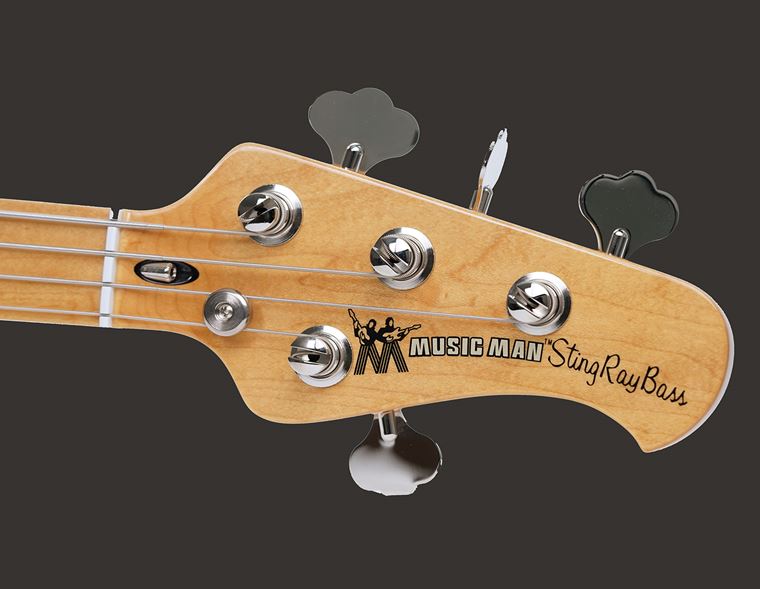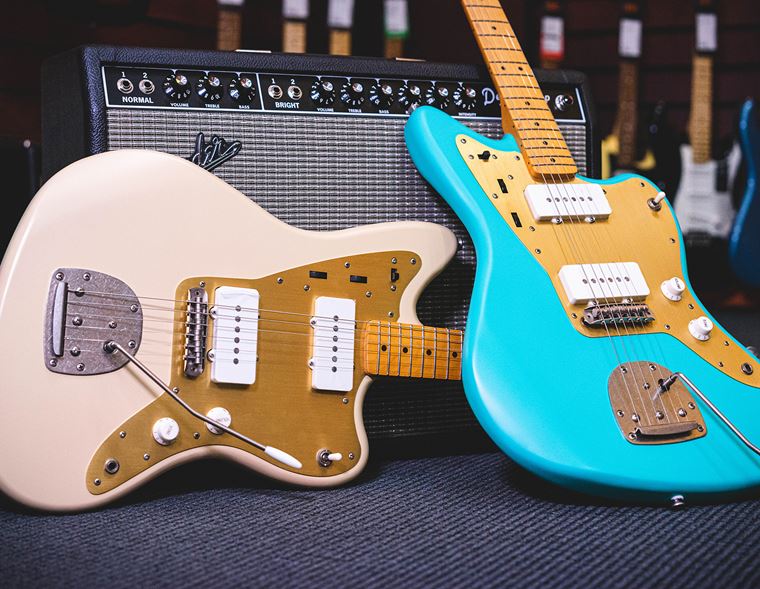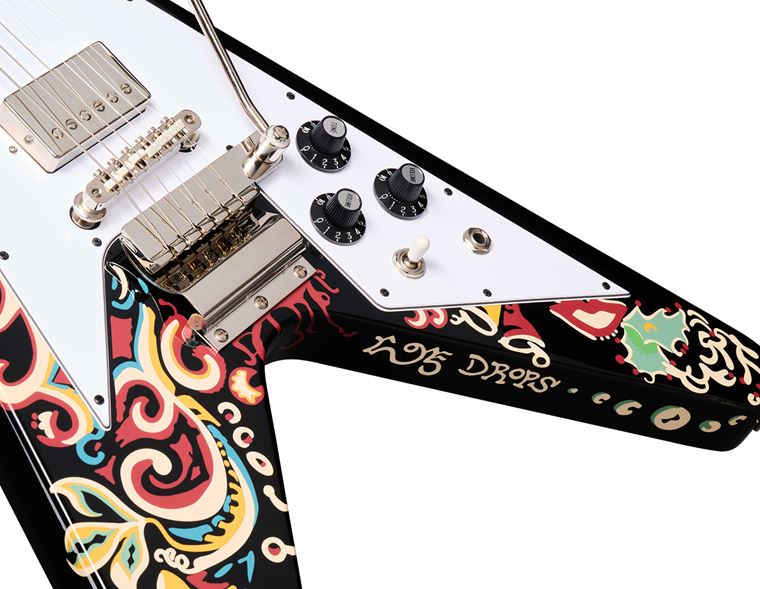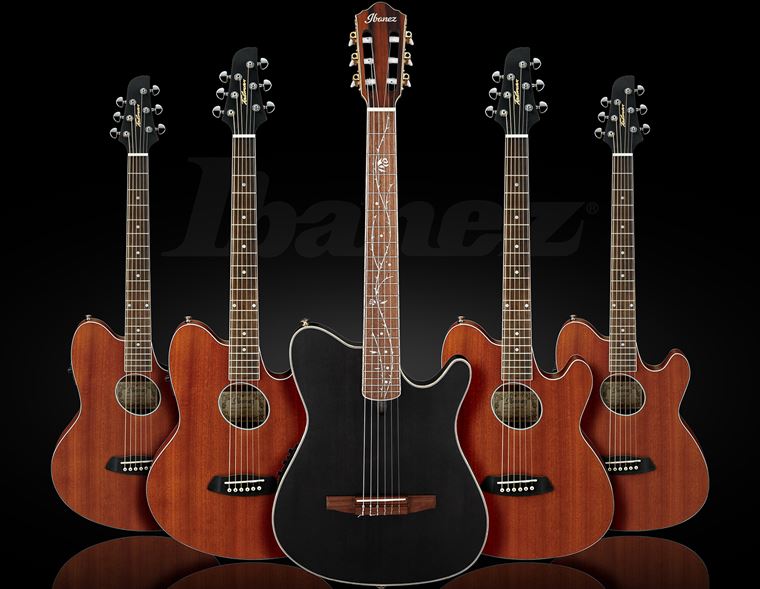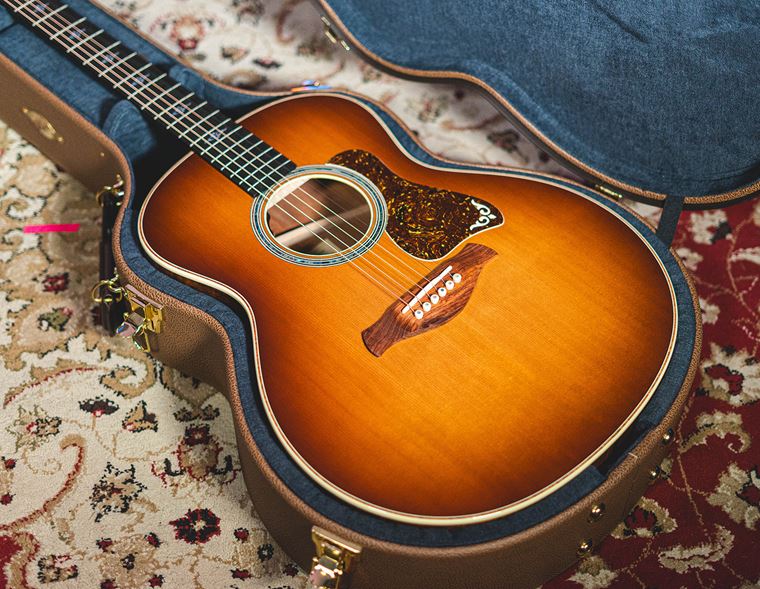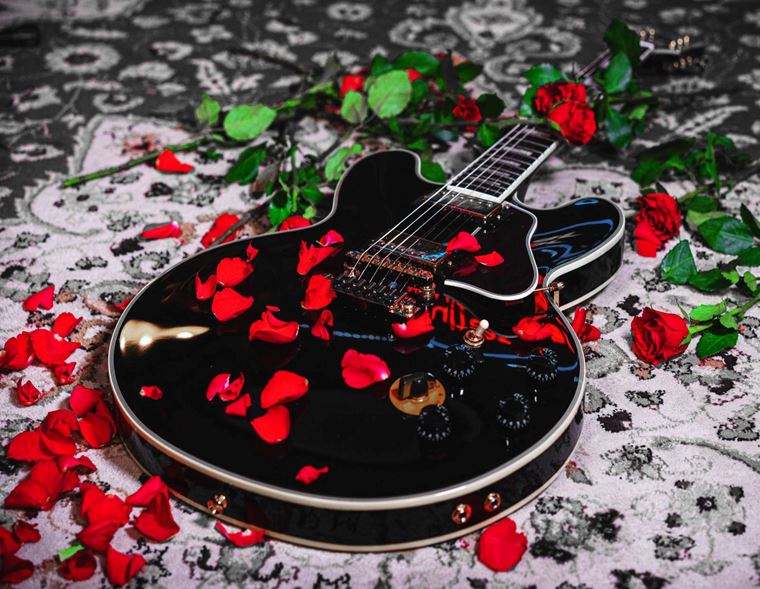More Iconic Than a Les Paul? Gibson Acoustic Guitars (Updated for March 2025)
Published on 12 March 2025
What do you think of when you hear the term ‘Gibson guitar’? Is it a sunburst Les Paul? A cherry red ES335? Lots of us tend to focus on electric guitars, but for many players, the phrase ‘Gibson guitar’ is more likely to summon images of an SJ-200 or a J-45.
Truly, Gibson are a genuinely iconic acoustic brand in addition to their dominance in the electric guitar world. Just as Fender are rightly renowned for their electric guitars and basses (and amps, let’s be honest), Gibson are equally lauded for their world famous range of acoustic guitars in addition to the electrics.
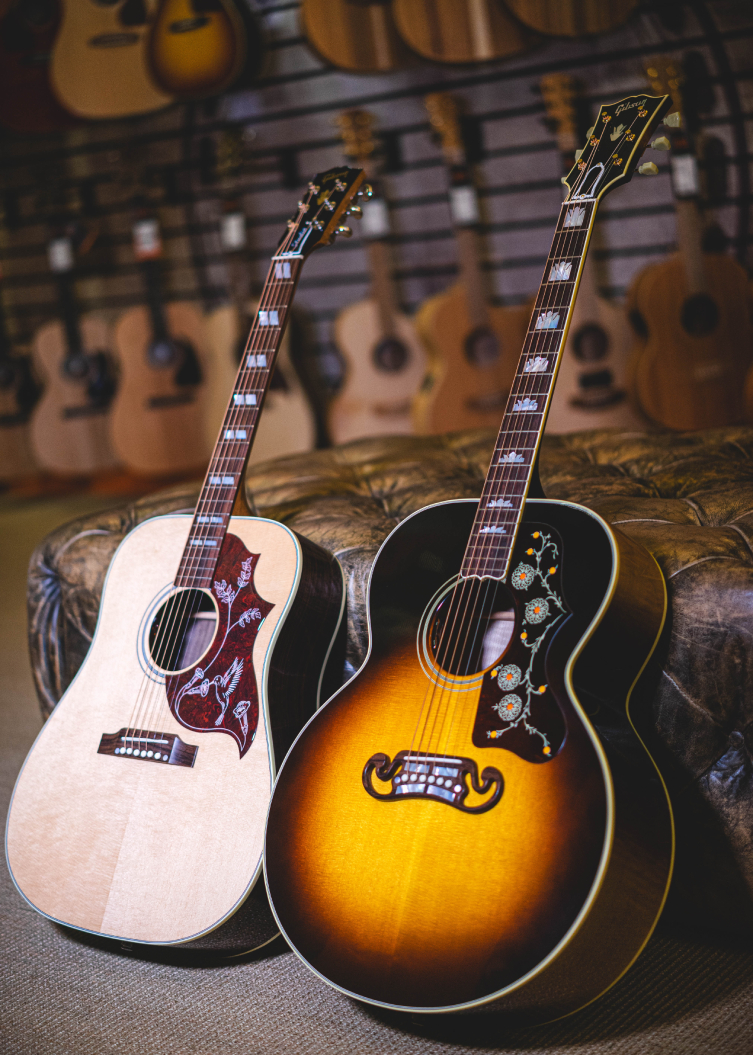
Today, we want to give up a little time and space to these unplugged heroes. We want to check out what Gibson are actually producing today in terms of acoustic guitars, how these relate to historic models, and how these models have helped shape modern music culture.
So, why not give yourself ten minutes right now to relax, stick the kettle on and join us for a brief trot through the colourful and charismatic world of Gibson acoustic guitars? This way, if you please…
Contents
Where Are Gibson Acoustic Guitars Made?
Heritage & Legacy of Gibson Acoustic Guitars
Gibson Acoustic Guitars
In many ways, Gibson are almost as significant for the world of acoustic music as Martin & Co. In historical terms, both are North American brands who have been producing classic designs for decades and decades. Some of these are actually more like a century old, in fact, and the most popular of them have gone on to become some of the most influential and, inevitably, copied, designs in the world. Many of the world’s biggest artists are seen using Gibson acoustics and they remain a popular choice for pros as well as an aspirational choice for hobbyists.

Gibson, as you may well know, were established as a company in 1902, after founder Orville Gibson had spent the previous 8 years building mandolins from his Kalamazoo, Michigan workshop. The first acoustic guitars started to appear in the 1930s, when Gibson were enjoying a healthy rivalry with New York company Epiphone. It would be decades before Epiphone came under the wing of Gibson, and by that point, many classic acoustic guitar designs had already been long established.
Where Are Gibson Acoustic Guitars Made?
Today’s Gibson acoustic guitars are made in Bozeman, Montana. This has been the way since they bought over the Garrison Guitar company in 2007. The guitars are all made from solid timbers and you can choose from classic models and more recent re-drawings of those famous silhouettes. The Gibson acoustic line is pretty comprehensive, so we won’t see everything today, but there are a few that are too famous to miss!
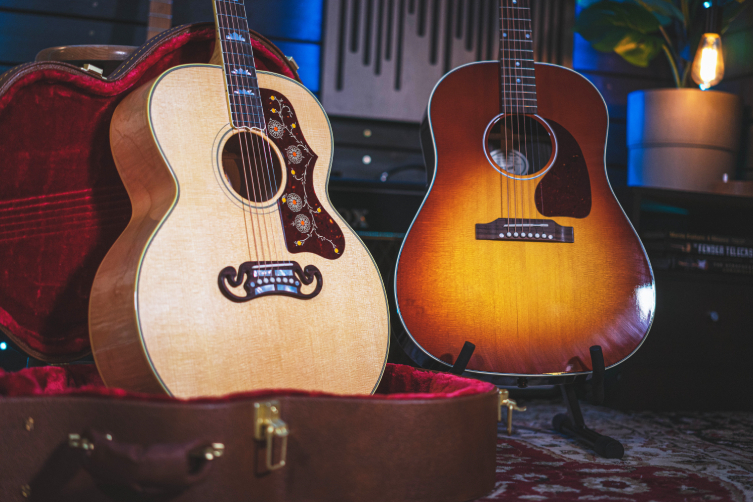
Let’s take a look at a selection now, and maybe check out some of the newer models while we’re at it…
Types of Gibson Acoustic Guitar
1. Gibson SJ-200
Why not start with one of the most recognisable Gibson acoustics? Whether you’ve seen it in the arms of Elvis Presley, Bob Dylan and any other singer-songwriting megastar, you’ll definitely recognise the Gibson SJ-200. This is the biggest body design that Gibson make, so it’s appropriately named the ‘Super Jumbo’, and it’s a strummer’s delight indeed. Loud, proud, ornate and full of confident energy, this is an acoustic guitar with real star power.
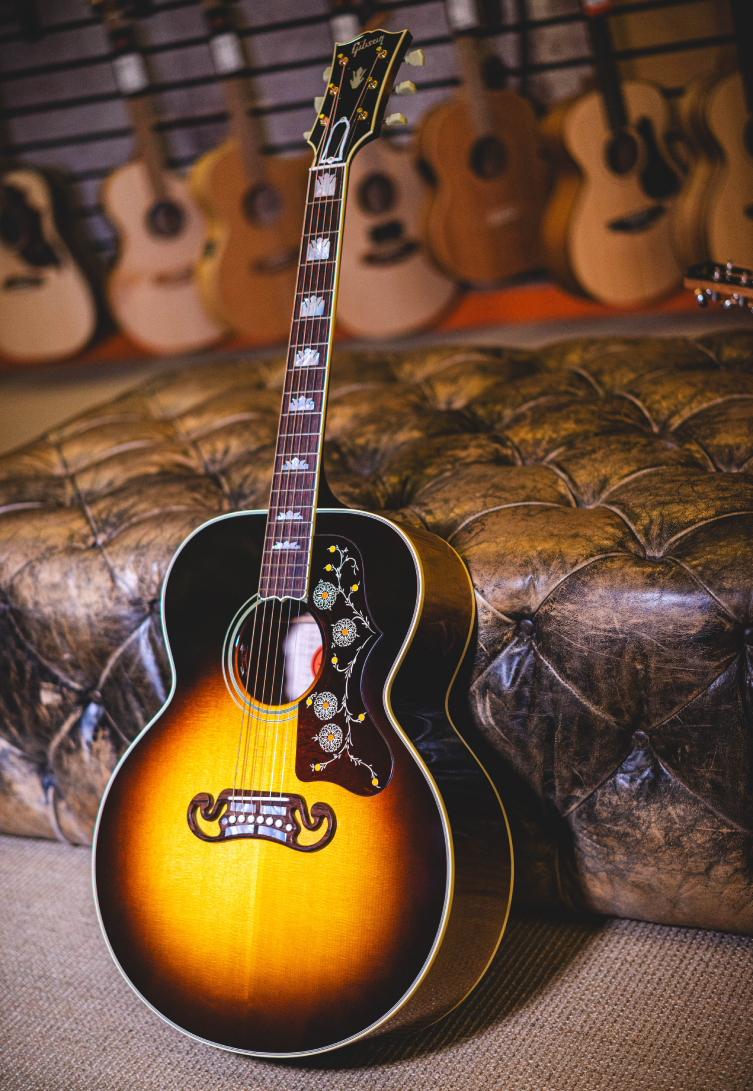
It’s been around since 1937, believe it or not, and was designed for maximum volume. To that end, the body is made with spruce and maple, the latter’s brightness adding some top end liveliness to the depth and size of the guitar’s sound. From the ornate pickguard to the ‘moustache’ bridge, the SJ-200 is a stunning object indeed, and one that backs up its beauty with a sound to die for.
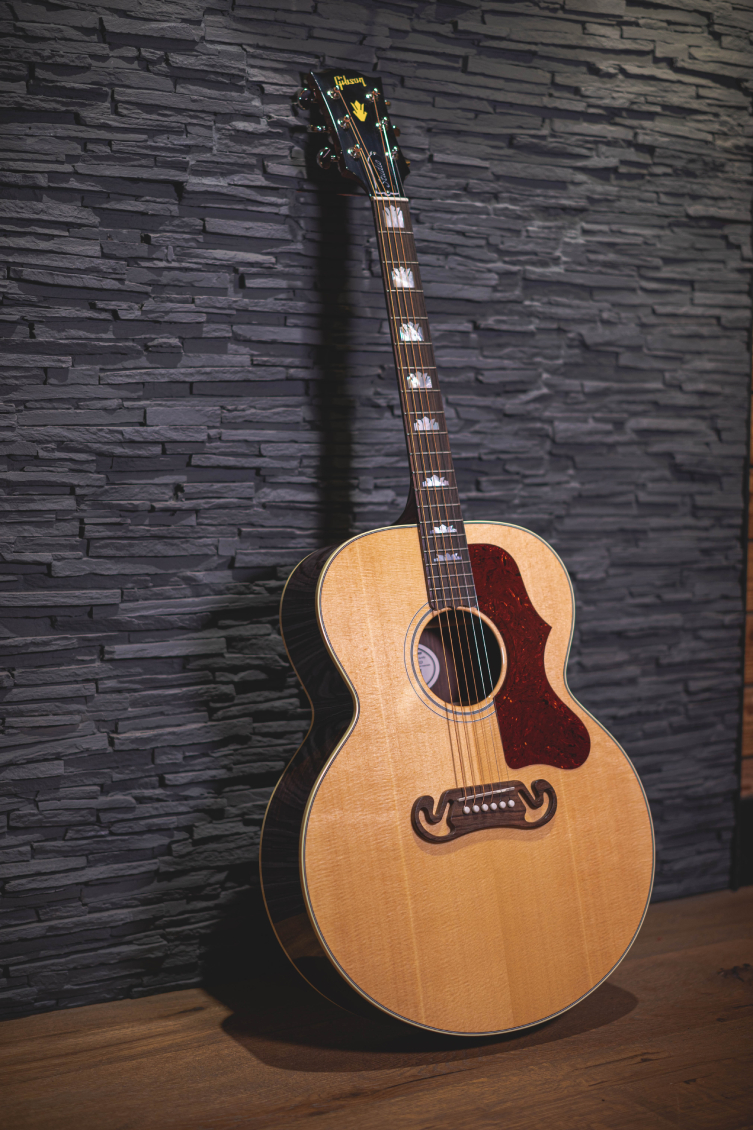
Gibson have also offered a smaller take on this design as the J-185, released in the fifties (and available still) and featuring many of the same distinctive decorative elements of its larger sibling.
Whichever size you prefer, these models are perfect for performers who like to bring a show. Dylan’s had his own signature version but the SJ-200 is as comfortable in country gigs and alternative rock settings as well.
2. Gibson Hummingbird
From one beauty to the next: the Hummingbird is one of Gibson’s most popular acoustics for good reason! Their most famous dreadnought, the Hummingbird has been around for over 60 years, and its appeal remains undiminished. A square-shouldered dreadnought (Gibson offers another type of dreadnought, as we’ll see), the Hummingbird offers a sound that’s a good midway point between projection and detail.

The dreadnought shape these days is probably the most well-used in the industry, because it’s useful to both strummers and fingerpickers. The body size allows for ‘size’ in the sound but it’s still just small enough to offer focus for arpeggios and single notes, making the shape a great all-rounder. Those square shoulders add a little extra top end to the tone (look to an acoustic guitar’s ‘shoulders’, ‘waist’ and ‘hips’ to get weirdly a accurate idea of how the top end, mids and low end of the sound will be), which can help the Hummingbird stand out sonically.
You know what else makes it stand out? The gobsmacking good looks, right? They really are quite lovely instruments to behold, no matter which of the various finishes you opt for. From that distinctive pickguard to the ‘split parallelogram’ fingerboard inlays, the Hummingbird is a tour de force of brazen good looks.
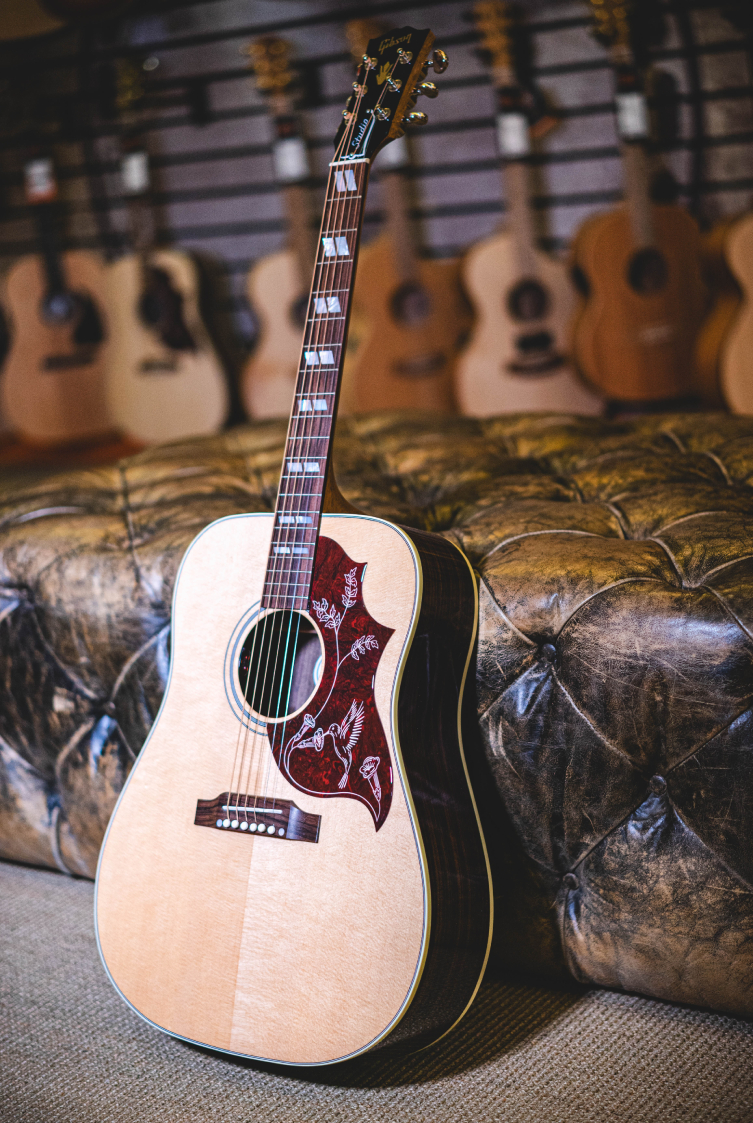
The Gibson Dove is a very similar cousin to the Hummingbird. Yes, there’s a different bird depicted on the pickguard, but are there any other differences? Indeed there are! Both have the same square shouldered dreadnought design, but the Dove has a flamed maple back & sides (with a spruce top) as opposed to the Hummingbird’s mahogany back and sides. This certainly changes the sound (more clarity with the Dove, slightly less depth), but the guitars feel different too. This is due to the Hummingbird using the ‘Gibson Standard’ scale length of 24.75”, whereas the Dove opts for a 25.5”, a specification it shares with the SJ-200, actually!
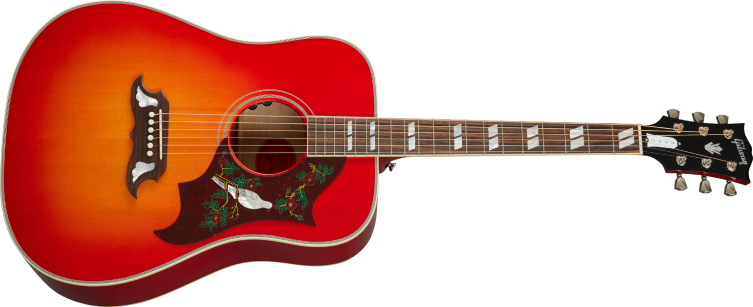
3. Gibson J-45
Is the Gibson J-45 actually the most popular Gibson acoustic of all time? It’s hard to say, but this slightly less extrovert model has as significant a history and fanbase as its more opulent stablemates. The J-45 was Gibson’s first dreadnought release, though it differs from what we’ve so far seen by being a ‘round shouldered’ dreadnought. It’s a very widely used guitar, especially by the Greenwich Village scene of 1960s New York.
The J-45 is made from mahogany and spruce - just like the Hummingbird - though the sloped shoulders take away a little of that top end, giving the J-45 a warmer sound. Again, finger pickers and strummers alike will find fertile sonic ground here!
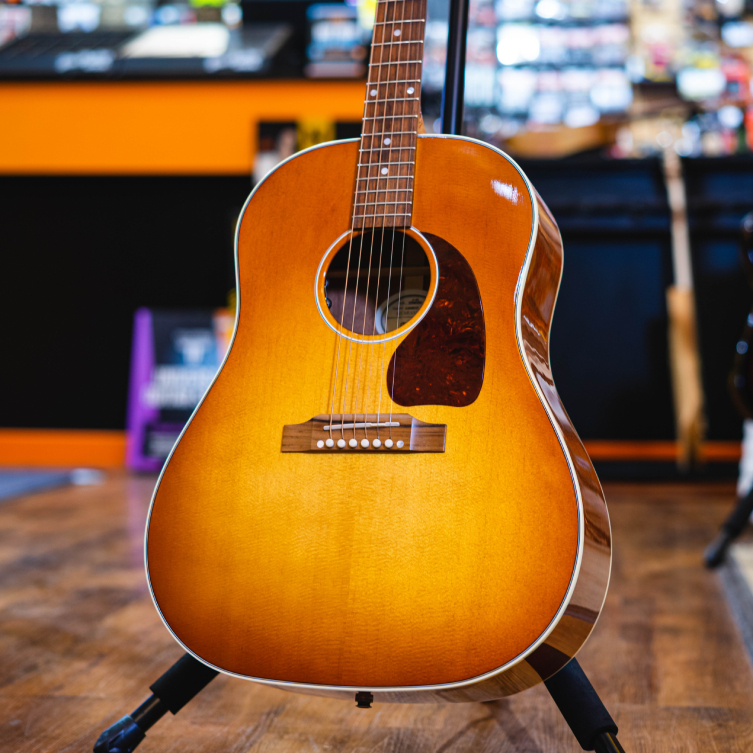
The Gibson J-45 was initially intended as an affordable alternative to the Hummingbird and the SJ-200, and this is obvious in its stripped down look. Decoration is minimal, though it’s still a looker and has been issued in a variety of gorgeous burst finishes over the years.
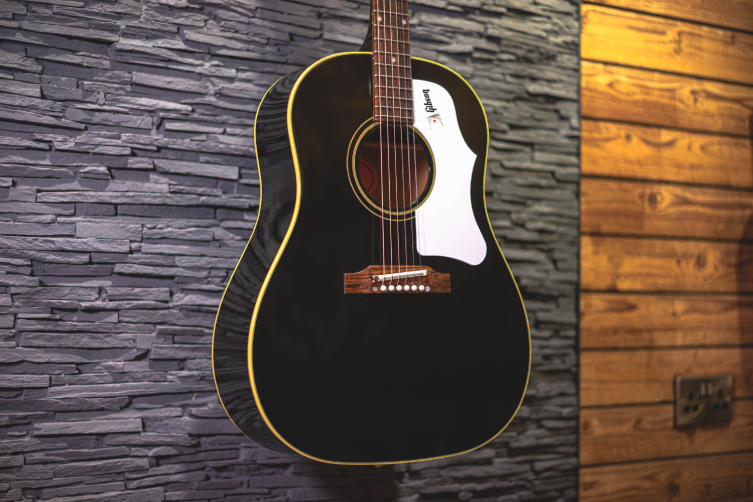
You’ll also come across models like the J-35 and J-50, which are related to - but perhaps less widely used than - the J-45. The J-35 tends to have a chunkier neck and has one less fret than the J-45 (19 rather than 20). The J-50 also has a bigger neck, with a rounded profile, and an adjustable saddle at the bridge. Other than that, the biggest difference is the larger hummingbird-like pickguard.
There is also the Gibson Southern Jumbo, which is another similar model. The Southern Jumbo is different due to having a slimmer neck and offering a slightly more ‘dressed up; look with more layers of binding.
4. Gibson L-00
During the Depression years of the 1930s, when Wall Street fact cats tried to ruin everybody’s fun, guitar manufacturers looked for ways to offer less expensive instruments that still contained quality. Martin released their all-mahogany 15 series, for example, and Gibson offered the likes of the L-00. The Gibson L-00 is what we (not Gibson, we’d stress) would call a parlour guitar. A parlour guitar is a small bodied acoustic designed for easy portability (swiftly carry-able to your parlour or porch for an impromptu sesh) and maximum volume-to-size ratio. Players could play these where space wasn’t so plentiful, and they could carry them on public transport, jumping out to busk wherever it suited them.
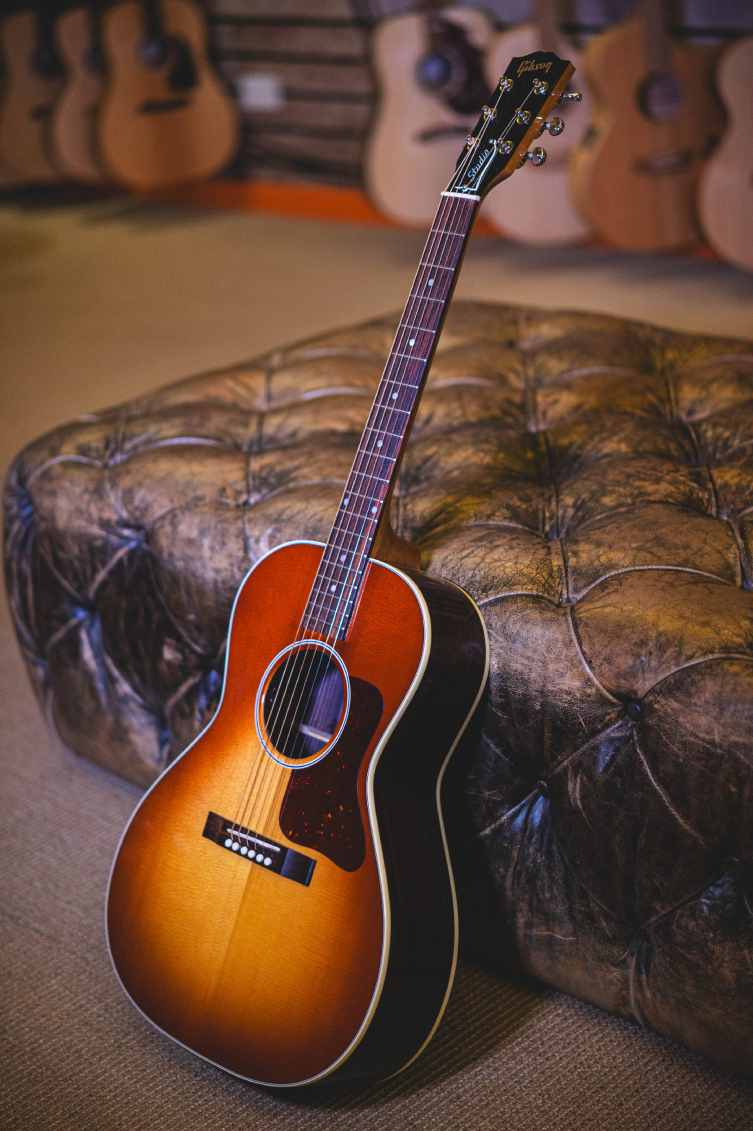
The sound of the L-00 is unique and lovely: there’s certainly a warmth there - more so than you’d expect from its relatively diminutive size - but it’s mixed with a good amount of note focus: fingerpicked lines and arpeggios trickle off beautifully from such a guitar. This is a great one for the blues players and fans of instrumental rootsy Americana.
Gibson Special Range
New for 2025 is the Gibson Studio acoustics. These gorgeous Montana-made instruments have slightly shallower bodies, satin nitrocellulose finishes and resonant tones that have classic Gibson tone DNA all over them!

There is a Hummingbird, a J-45 and an L-00, each available in two finishes. These are more affordable than the regular models, but to me they punch well above their weight, both in feel and in sound. These seriously impressive specimens are gig ready (with great LR Baggs pickups) and should be on every Gibson fan’s shortlist! FOr more, check out my dedicated Gibson Special blog.
Interview with Robi Johns from Gibson Montana
Last year, I had the privilege of sharing some time online with Robi Johns, Director of Sales and Marketing for Gibson Acoustics. Click the video below to enjoy the full conversation!
Heritage & Legacy of Gibson Acoustic Guitars
Gibson acoustic guitars are historically significant, influential and massively playable. They are particularly beautiful, and stand out in a world of light brown dreadnoughts. Their tones are as seminal to the world of music as Martin & Co’s, and their place in the culture is equal too. It’s a mark of having really arrived, to own and play a quality Gibson acoustic. With their roster of body sizes, ranges and finishes, you’ll be able to really zone in on the models that speak to you the most.
If you are in the market for a new acoustic guitar - maybe your ‘lifer’ - then please do visit us and compare your favourite Gibson acoustic guitars to anything else we have in the shop. You’re gonna have a great day!


